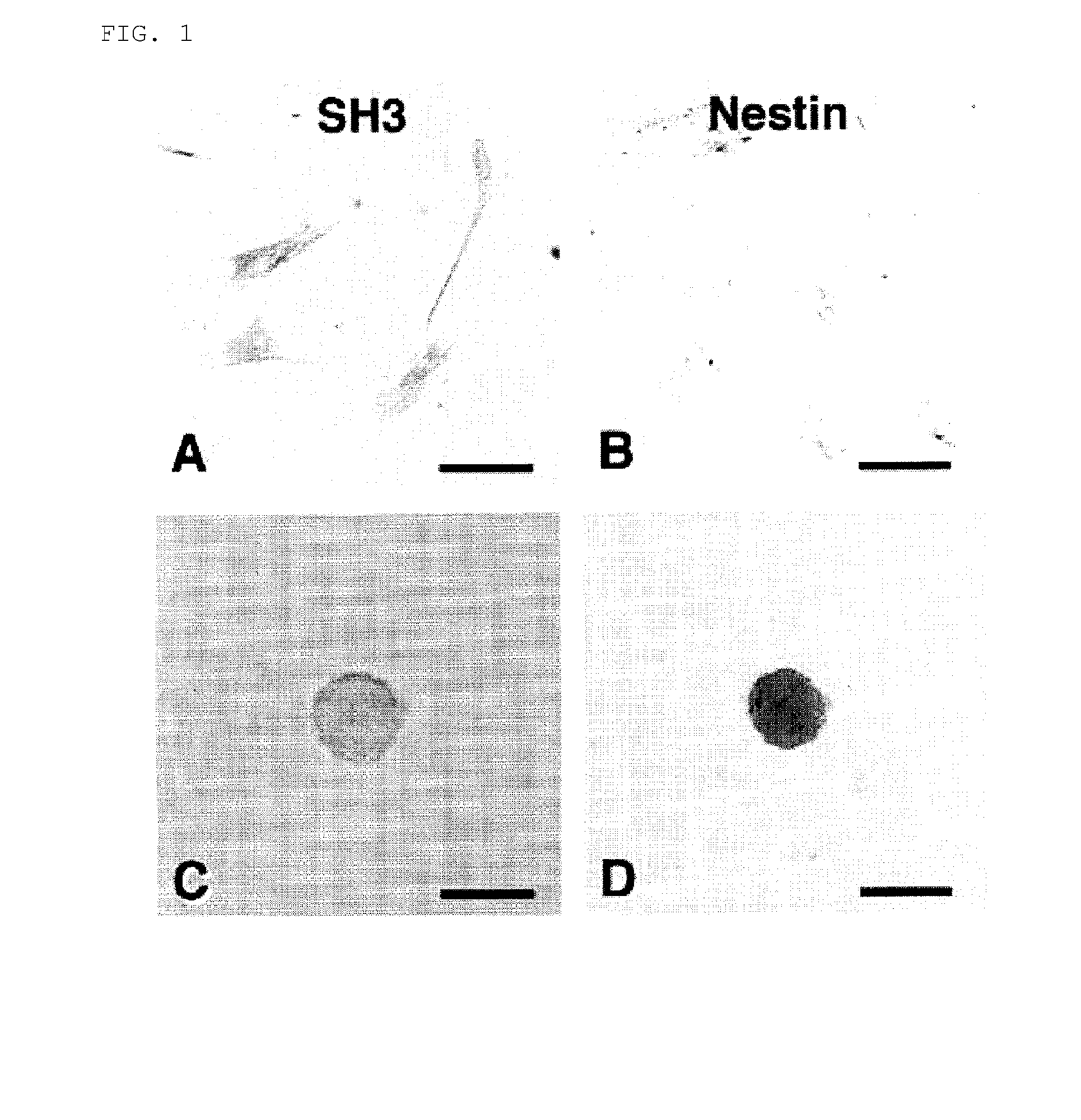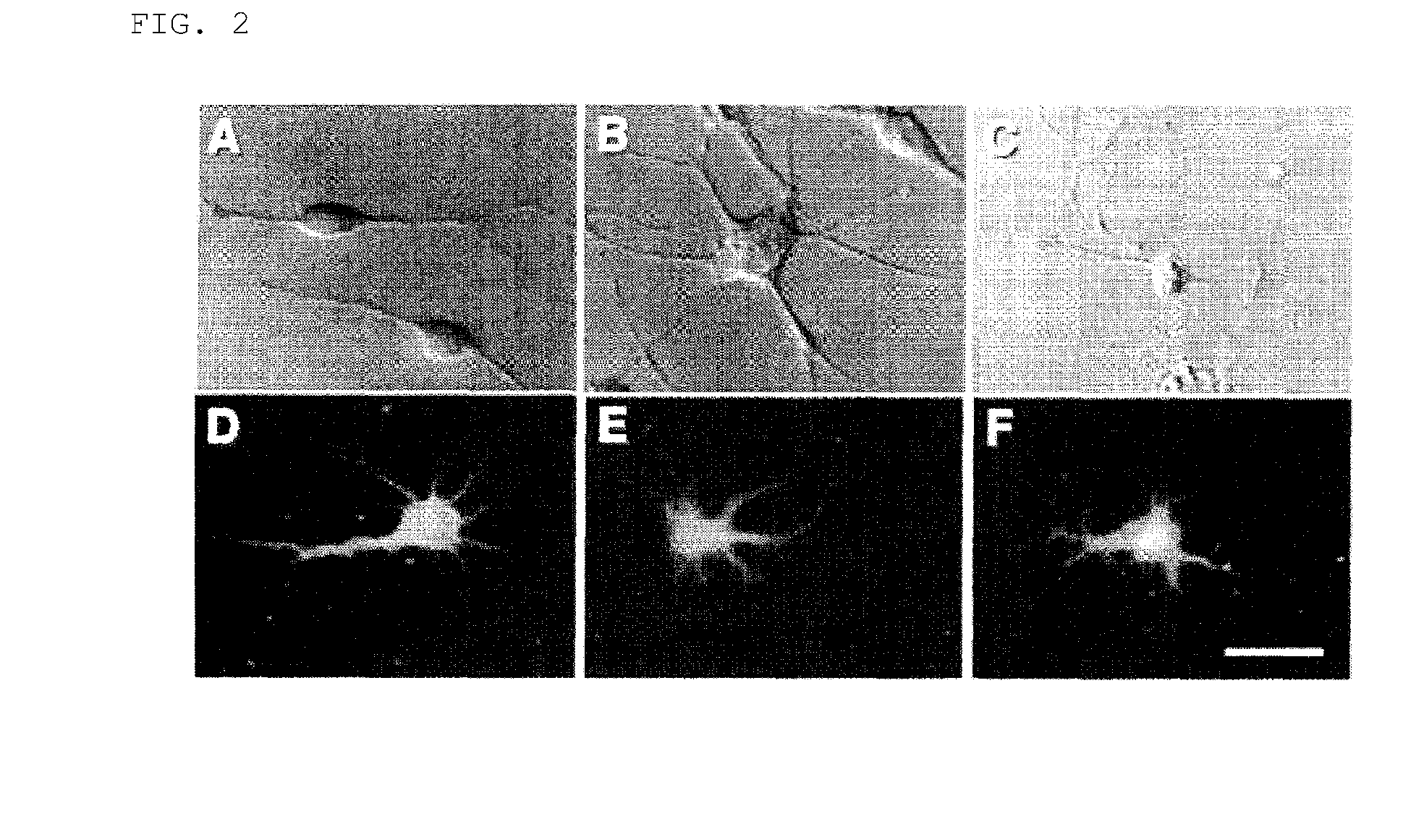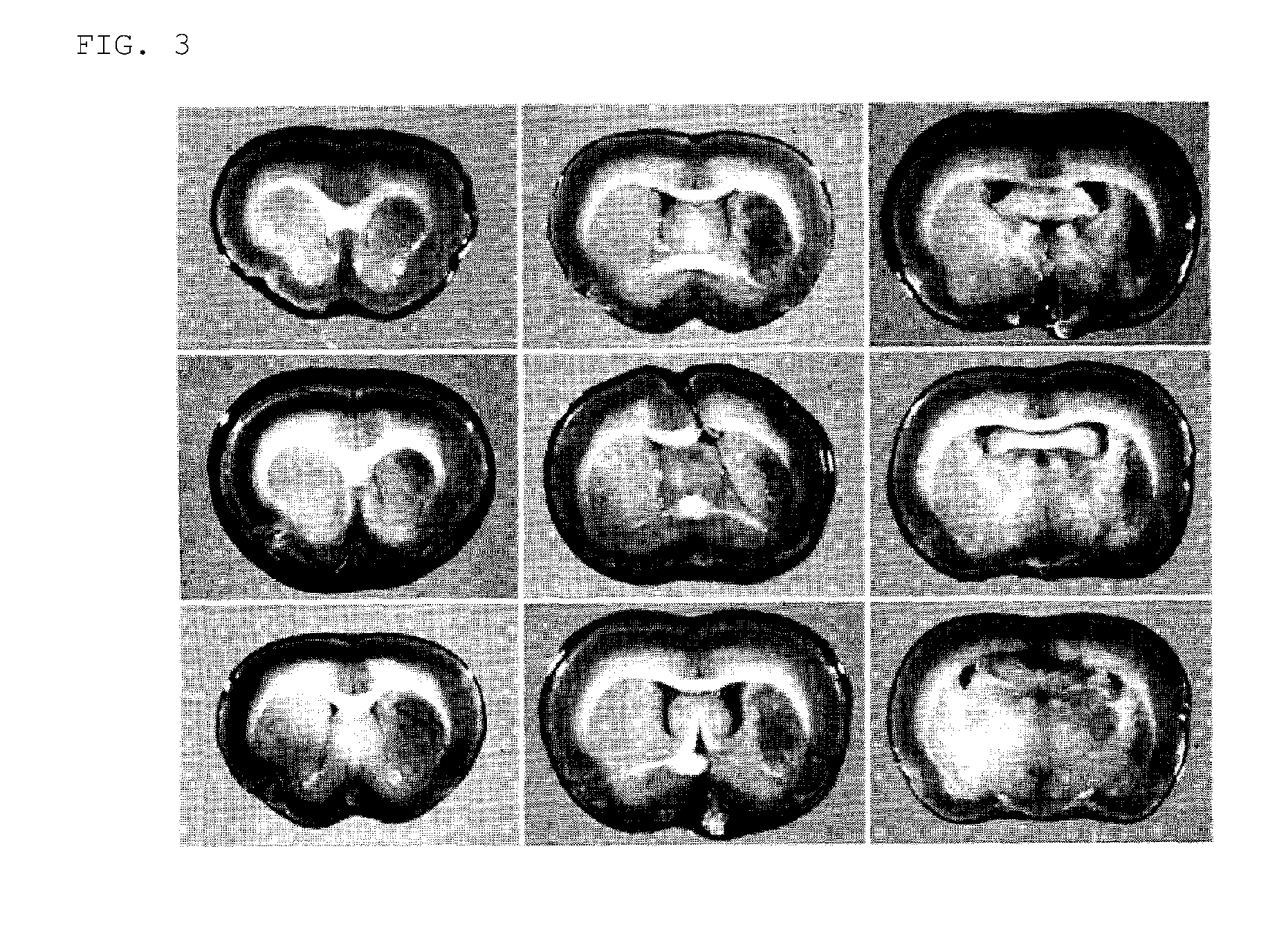Method for inducing differentiation of mesodermal stem cells, es cells, or immortalized mesodermal stem cells into neural cells
a mesodermal stem cell and neural cell technology, applied in the field of inducing neural cell differentiation of mesodermal stem cells or es cells, can solve the problems of neurological deficit, difficult to collect neural stem cell tissues from the cerebrum, and the method is considerably problematic, so as to improve the proliferation rate of cells, improve the effect of therapeutic efficiency and promote the differentiation into neural cells
- Summary
- Abstract
- Description
- Claims
- Application Information
AI Technical Summary
Benefits of technology
Problems solved by technology
Method used
Image
Examples
example 2
Induction of Differentiation of Mesodermal Stem Cells into Neural Cells
[0100](1) Induction of Differentiation of Mesodermal Stem Cells into Neural Stem Cells:
[0101]First, the cells were washed and then the cells in the culture medium were collected upon enzymatic treatment (reagents: 0.05% trypsin / 0.02% EDTA; at room temperature for 5 minutes). After adding an equal volume of culture medium, the cells were dispersed into single cells by pipetting for several times. Then, the cells were centrifuged at 600 rpm for 5 minutes. The precipitated cells were sucked up with a pipette. Then, the cells were further cultured in a floating state at 37° C. under 5% CO2 in fresh culture medium 1 [50% DMEM (Dulbecco's modified essential medium) / 50% F-12 / 1% FSC; 10 ng / ml basic fibroblast growth factor (bFGF) added every day; 10 ng / ml epidermal growth factor (EGF) added every day] or culture medium 2 [NPBM (Neural progenitor cell basal medium; Clonetics) / 2% Neural survival factors (Clonetics) / 0.2% hE...
example 4
Evaluation of Neural Regeneration Potency
[0108]The neural regeneration potency of neural cells obtained by the above-described method for inducing differentiation was assessed using a brain infarction model (FIG. 3), a dementia model (FIG. 3), a spinal cord injury model (FIG. 4) and a demyelination model (FIG. 5). As a result, the cells were determined to have regeneration potency comparable to that of neural stem cells extracted and cultured from the brain.
example 5
Induction of Differentiation of ES Cells into Neural Cells
[0109]Mouse ES cells were continuously cultured in 20 ml of conditioned medium (DMEM, 10% FCS, 100 pM 2-mercaptoethanol, 1000 units / ml ESGRO (CHEMICON)) on a 100-mm gelatin-coated dish (IWAKI) at 37° C. under 5% CO2 until 90% confluence. Then, the culture medium was sucked up with a Pasteur pipette and the cells were washed three times with PBS. 2 ml of PBS containing 0.25% trypsin and 0.03% EDTA was added to the dish and then incubated at 37° C. for 2-5 minutes until the cells detached. 400 μl of FCS was added to stop trypsin reaction. The supernatant and detached cells were transferred into a centrifugation tube with a Pasteur pipette, pipetted for several times and then centrifuged at 1000 rpm for 5 minutes. The supernatant was discarded, and the cells were resuspended in NPMM. The cells were plated on a medium (50% NPMM and 50% ischemic brain extract) pre-warmed at 37° C., and then cultured in a suspension state in a 100-...
PUM
 Login to View More
Login to View More Abstract
Description
Claims
Application Information
 Login to View More
Login to View More - R&D
- Intellectual Property
- Life Sciences
- Materials
- Tech Scout
- Unparalleled Data Quality
- Higher Quality Content
- 60% Fewer Hallucinations
Browse by: Latest US Patents, China's latest patents, Technical Efficacy Thesaurus, Application Domain, Technology Topic, Popular Technical Reports.
© 2025 PatSnap. All rights reserved.Legal|Privacy policy|Modern Slavery Act Transparency Statement|Sitemap|About US| Contact US: help@patsnap.com



